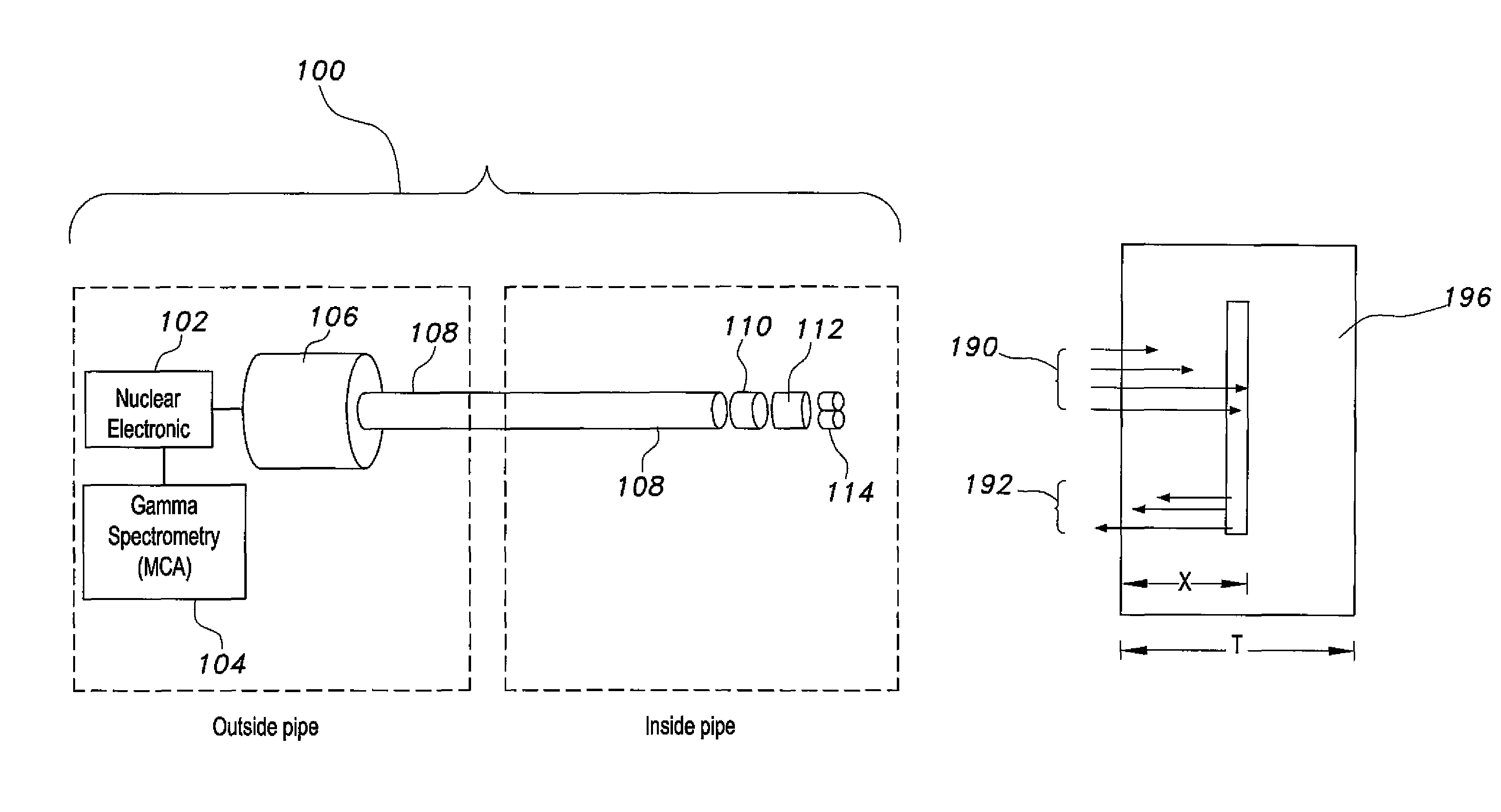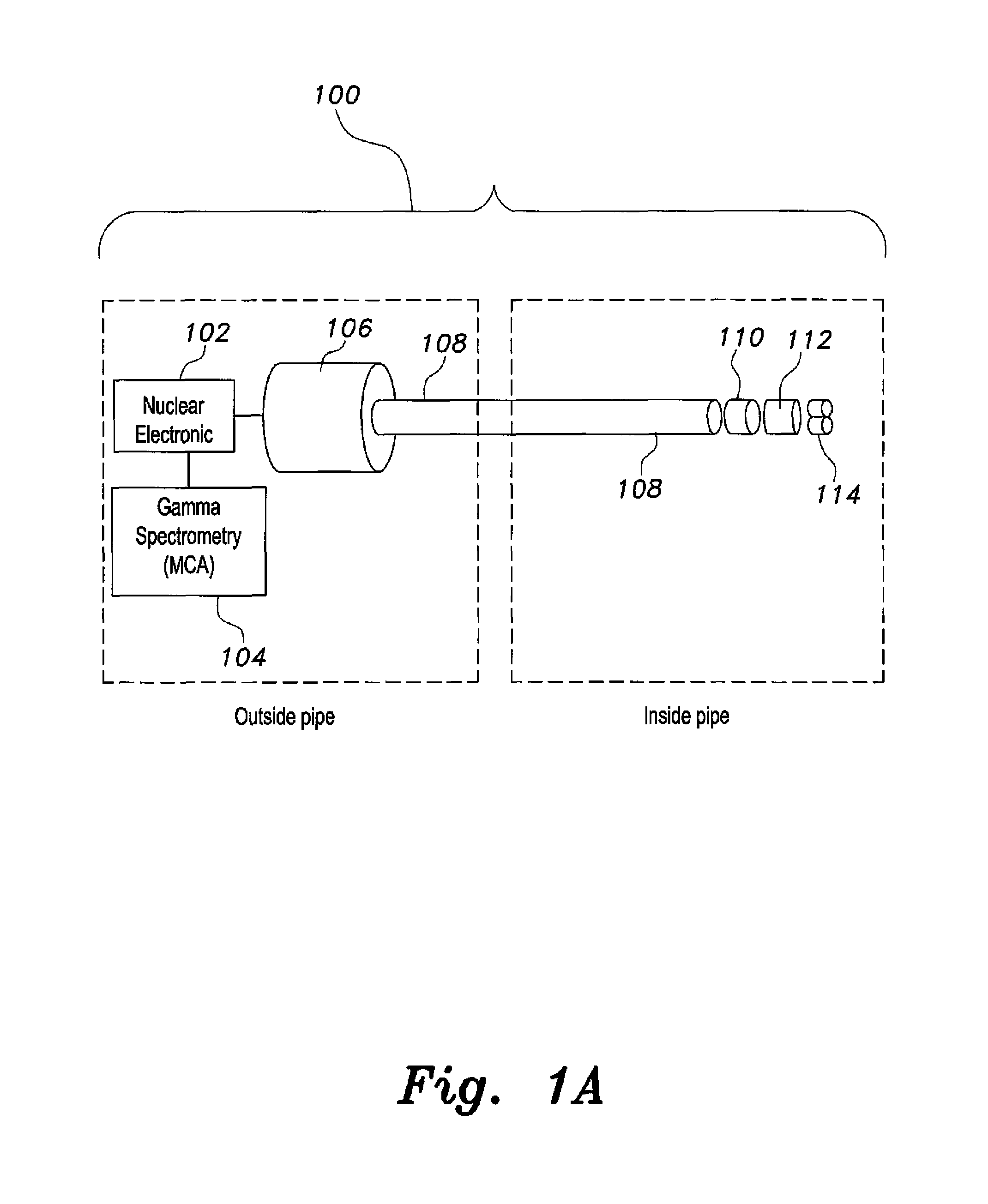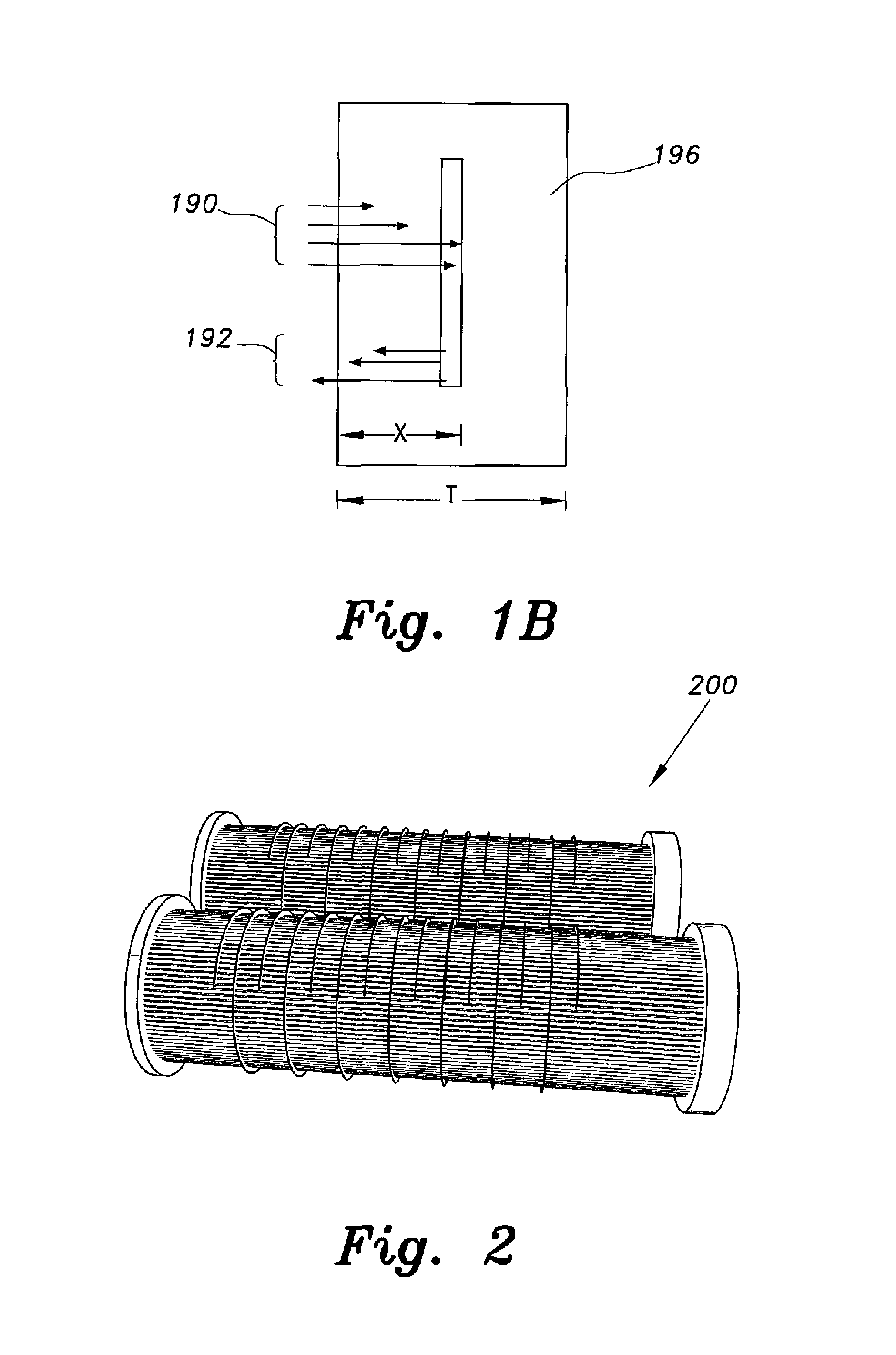Miniaturized pipe inspection system for measuring corrosion and scale in small pipes
a technology of inspection system and miniature pipe, which is applied in the direction of material analysis using wave/particle radiation, x/gamma/cosmic radiation measurement, instruments, etc., can solve the problems of time-consuming and insufficient information, limitation of the size of radiographic films that can be used, and the inability of the technique to predict which pipe has the defect, etc., to achieve high sensitivity
- Summary
- Abstract
- Description
- Claims
- Application Information
AI Technical Summary
Benefits of technology
Problems solved by technology
Method used
Image
Examples
Embodiment Construction
[0032]The miniaturized pipe inspection system 100 (shown in FIG. 1A) provides a system for inspecting twisted pipes, pipes whose cross sections are not circular, circular pipes, prepared or unprepared pipes, straight pipes, and bended pipes from the inside the pipe for heat exchangers, such as the heat exchanger tube bundle 200 shown in FIG. 2, or similar pipes. Referring to FIG. 1B, when gamma rays 190 are caused to be incident on a pipe wall 196, attenuation takes place in incident rays as well as the reflected gamma rays 192. The magnitude of attenuation depends on the energy of the gamma rays and the atomic number and density of the material. The attenuation to distance X of incident gamma rays 190 within the wall for a parallel beam is proportional to:
Exp(−μX), (1)
where μ is the linear attenuation coefficient of the incident ray. A portion of the intensity is scattered due to Compton interaction. Characteristic x-rays, as well as annihilation radiation of 0.511 MeV, are also e...
PUM
| Property | Measurement | Unit |
|---|---|---|
| diameters | aaaaa | aaaaa |
| energy | aaaaa | aaaaa |
| diameter | aaaaa | aaaaa |
Abstract
Description
Claims
Application Information
 Login to View More
Login to View More - R&D
- Intellectual Property
- Life Sciences
- Materials
- Tech Scout
- Unparalleled Data Quality
- Higher Quality Content
- 60% Fewer Hallucinations
Browse by: Latest US Patents, China's latest patents, Technical Efficacy Thesaurus, Application Domain, Technology Topic, Popular Technical Reports.
© 2025 PatSnap. All rights reserved.Legal|Privacy policy|Modern Slavery Act Transparency Statement|Sitemap|About US| Contact US: help@patsnap.com



